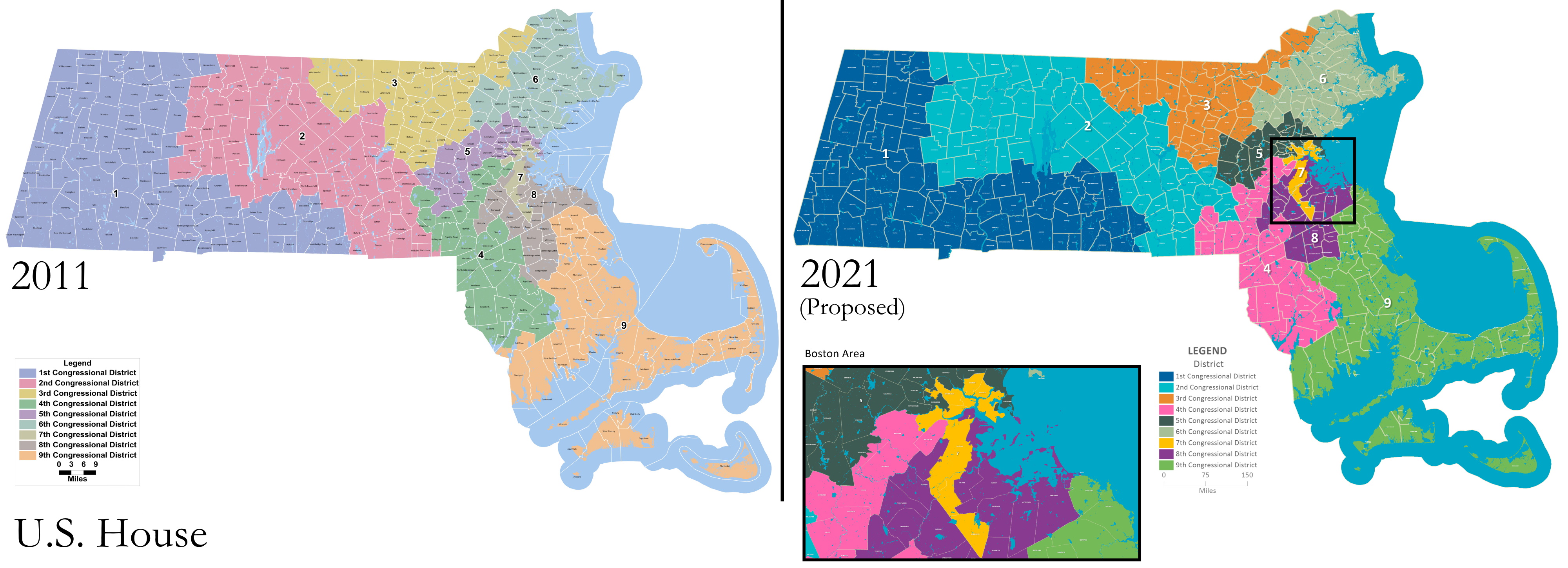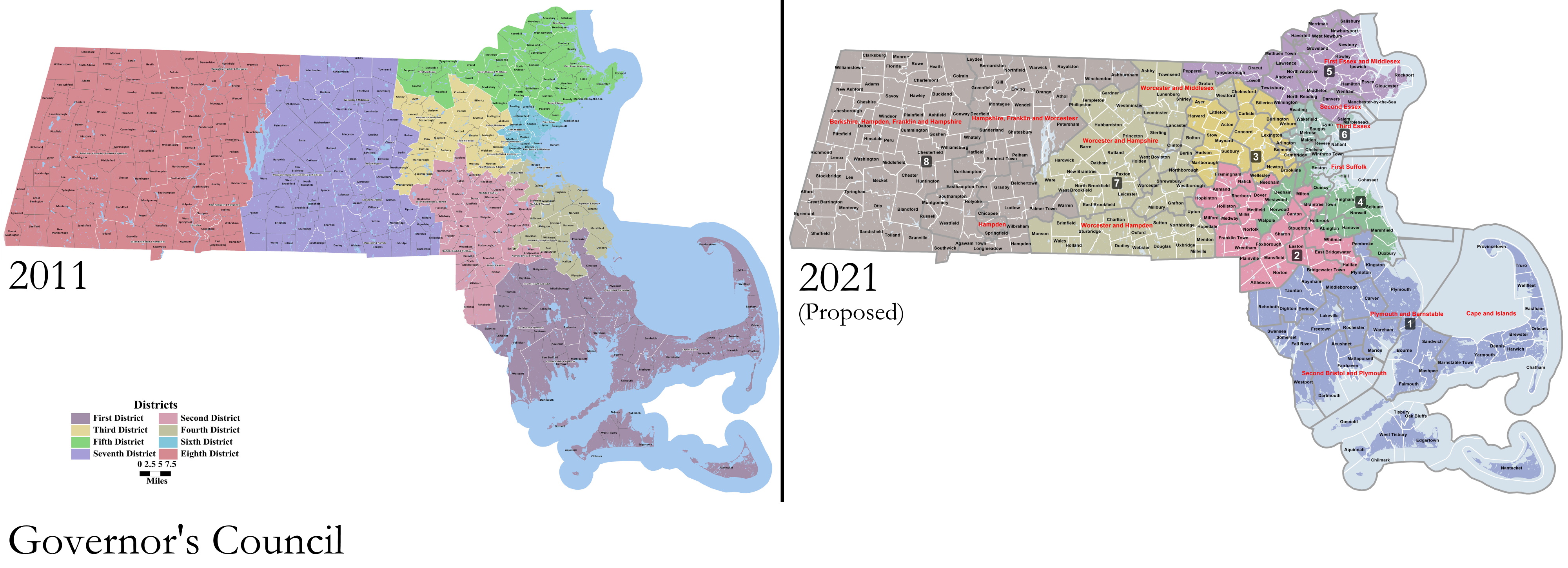latest
Fall River united in 4th district under new congressional map

By Chris Lisinski
State House News Service
STATE HOUSE, BOSTON, NOV. 1, 2021…..Fall River, the state’s 10th most populous city, would no longer be divided between two congressional districts under a draft map lawmakers released Monday that fell short of winning over voting rights advocates.
Top House and Senate Democrats rolled out their plan for redrawing the state’s nine Congressional districts and eight Governor’s Council districts late Monday afternoon, proposing new political lines that reflect the higher rate of population growth in the state’s eastern half and its expanding nonwhite communities.
No incumbent members of the all-Democrat U.S. House or the Governor’s Council, an elected body that vets and confirms judicial nominees, would be drawn into the same districts and forced to run against one another under the Legislature’s proposed maps.
“I believe that these congressional maps that we submit to you today leave no stone unturned and show an accurate and fair representation of the Census numbers that we received,” said Rep. Mike Moran, who co-chaired the Redistricting Committee.
Among the most notable changes in the Legislature’s draft map is unification of Fall River, which is currently divided across the 4th Congressional District represented by Congressman Jake Auchincloss of Newton and the 9th Congressional District held by Congressman Bill Keating of Bourne.
All of Fall River would fall into the 4th District under the proposed boundary lines, a change that Auchincloss praised as a significant improvement.
“Though the basic contours of the 4th District persist, there is one major change. I am thrilled that all of Fall River will now be in the district,” he said in a statement, adding that he and other lawmakers “have been working to ensure Fall River builds back better from the pandemic.”
But for advocates in the Drawing Democracy Coalition who wanted Fall River and nearby New Bedford to share the same representative in Congress, the map “misses a critical opportunity.”
Under the proposal, Fall River would be the southernmost community in the 4th District and New Bedford would remain in 9th District. Advocates warned that decision could leave Fall River’s voting power diluted by wealthier, whiter suburbs in the district’s northern stretches such as Brookline, Newton and Wellesley.

[Legislature / Redistricting Committee]
“While we’re glad that the Redistricting Committee’s proposed map makes Fall River whole, it also misses a critical opportunity to better ensure that the immigrant, working-class communities of Fall River and New Bedford are united and empowered politically to elect candidates of their choice,” said Dax Crocker, Democracy HUB Coordinator for the Coalition for Social Justice. “We are incredibly disappointed that the Legislature did not listen to the voices of the people of Fall River and New Bedford, and we urge them to reconsider.”
Redistricting Committee Co-chair Sen. William Brownsberger said lawmakers received “clear feedback” in support of unifying Fall River, but that he “wasn’t as clear about where people wanted it.”
The 7th Congressional District, the state’s only majority-minority congressional district, would see its share of non-white residents increase from 56.6 percent to 61.27 percent under the proposal, which Moran said would be “the highest percentage ever recorded in the state’s history.”
Moran said the committee crafted that proposal by shifting some populations between the 7th District, currently represented by Congresswoman Ayanna Pressley of Boston, and the 8th District, currently represented by Congressman Stephen Lynch of Boston. Some of the change also comes from “natural growth,” he added.
“Ten years ago, there was a discussion that we should maybe go to Brockton, go all the way to Brockton,” Moran said. “We chose not to because we believed, as turned out to be correct, that the populations in the northern part of that district had a better chance of growth than the populations in the southern part of that district, and that’s where you see that natural growth, because we didn’t go all the way to Brockton, we stopped at Randolph.”
Lawmakers created the majority-minority district in 2011, and Pressley — the first Black woman elected to represent Massachusetts in Congress — defeated Rep. Mike Capuano in a 2018 Democratic primary for the seat.
Moran said eight Massachusetts communities would be split across multiple congressional districts under the proposed map, though it was not immediately clear which communities that count includes or how it varies from the current map.
The newly proposed map would swap several communities between the 1st Congressional District represented by Congressman Richard Neal of Springfield and the 2nd Congressional District represented by Congressman Jim McGovern of Worcester, slimming down the upper half of Neal’s L-shaped district and bulking up its bottom half.
Brownsberger said many of the broad shifts at play in the Congressional map reflect the same patterns in the state legislative maps, which lawmakers sent to Gov. Charlie Baker’s desk last week.
“The population in the counties west of Worcester, Worcester and west, were low compared to the rest of the counties by about 60,000 to 70,000 people,” he said.

[Legislature / Redistricting Committee]
Compared to past cycles, the proposed map appears likely to generate less upheaval. In 2011, when Massachusetts shed a Congressional district, Keating moved from Quincy to Bourne to run in the newly redrawn 9th District rather than challenge Lynch.
The 2020 U.S. Census counted 7,029,917 people in Massachusetts, a 7.4 percent increase over the past decade. Growth has been uneven, with population growing more rapidly in eastern portions of the state and shrinking in both Berkshire and Franklin Counties.
Trends varied across racial lines, too, with the decade bringing a 7 percent decline in the state’s white population, a nearly 7 percent increase in the Black population, a 45 percent increase in the Asian population and a more than 40 percent increase in the Hispanic population, according to Moran.
Based on the new population figures, lawmakers drew the nine congressional districts with an ideal size of 781,102 people — about 53,000 more than during the last decennial redistricting process — and a deviation between districts of plus or minus one person.
The state constitution calls for each Governor’s Council district to be drawn based on the contours of five state Senate districts.
Brownsberger said the committee received “relatively little” input on the lines for the Governor’s Council districts. The most notable change in that map is that the Norfolk and Suffolk Senate district flipped from the Council’s 2nd District to its 4th District, while the Plymouth and Bristol Senate district went the other way in the swap.
Most other changes reflect broader shifts in the Senate map, Brownsberger said.
The committee plans to receive feedback on its maps for the next eight days and convene a public hearing on Tuesday, Nov. 9. After that, Brownsberger said, members hope to finalize their decisions “very shortly” with the Nov. 17 end of formal lawmaking sessions for 2021 looming.
“We hope to complete the final legislation by early to mid-next week and then to vote on it early to mid-the following week,” he said.
[Matt Murphy contributed reporting.]





SocialCrusticeCrusader
November 2, 2021 at 5:22 am
What a communist jerk! Build back better! Better than what? Fall River is a sewer, just look at the crime. What are the politicos going to build, more jails? Any representation Fall River has will be solely focused on staying in elected office. Auchinclos is a commie puppet like all the democrats in Massachusetts. We are doomed!